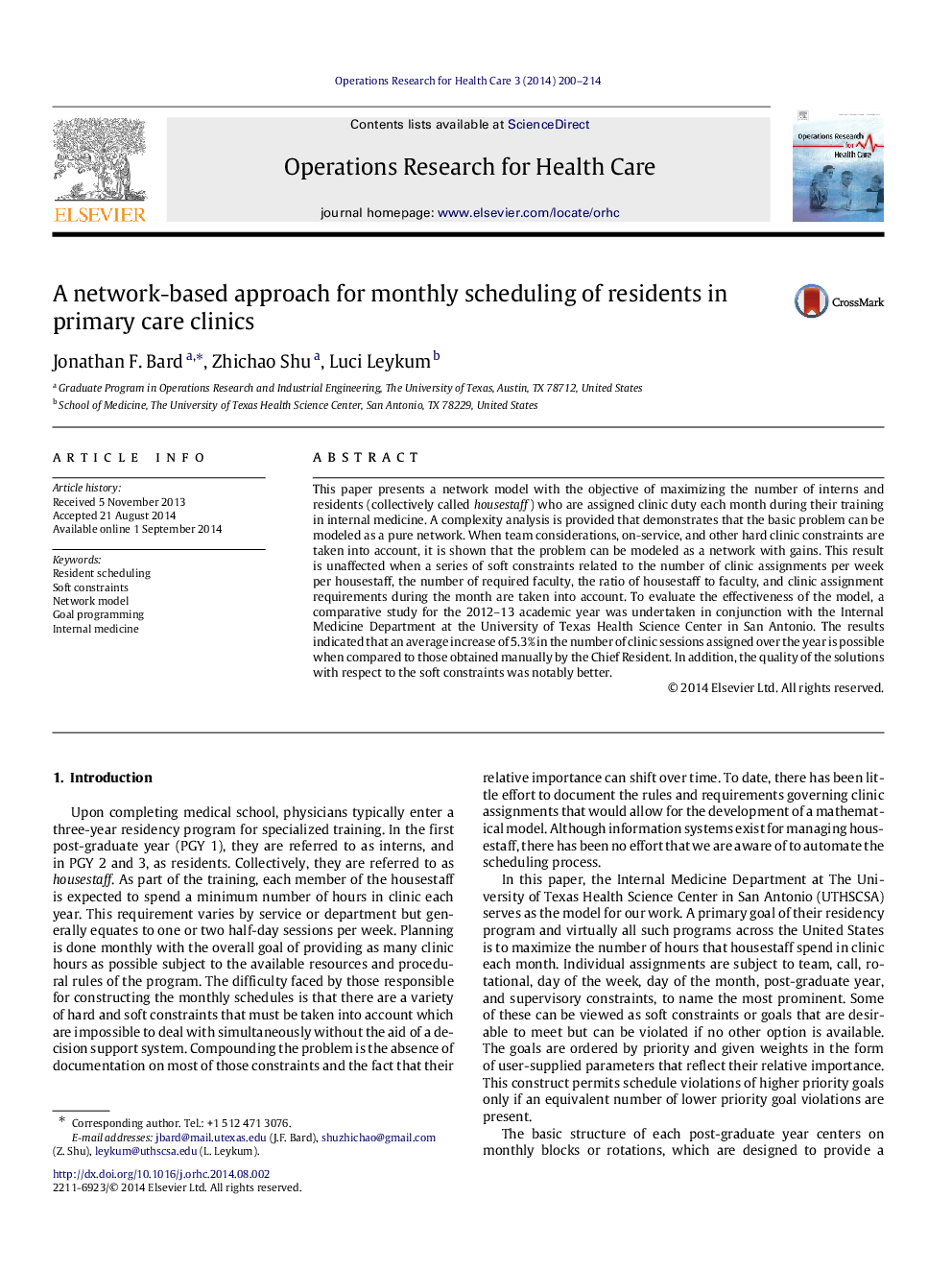| Article ID | Journal | Published Year | Pages | File Type |
|---|---|---|---|---|
| 1141960 | Operations Research for Health Care | 2014 | 15 Pages |
This paper presents a network model with the objective of maximizing the number of interns and residents (collectively called housestaff) who are assigned clinic duty each month during their training in internal medicine. A complexity analysis is provided that demonstrates that the basic problem can be modeled as a pure network. When team considerations, on-service, and other hard clinic constraints are taken into account, it is shown that the problem can be modeled as a network with gains. This result is unaffected when a series of soft constraints related to the number of clinic assignments per week per housestaff, the number of required faculty, the ratio of housestaff to faculty, and clinic assignment requirements during the month are taken into account. To evaluate the effectiveness of the model, a comparative study for the 2012–13 academic year was undertaken in conjunction with the Internal Medicine Department at the University of Texas Health Science Center in San Antonio. The results indicated that an average increase of 5.3% in the number of clinic sessions assigned over the year is possible when compared to those obtained manually by the Chief Resident. In addition, the quality of the solutions with respect to the soft constraints was notably better.
